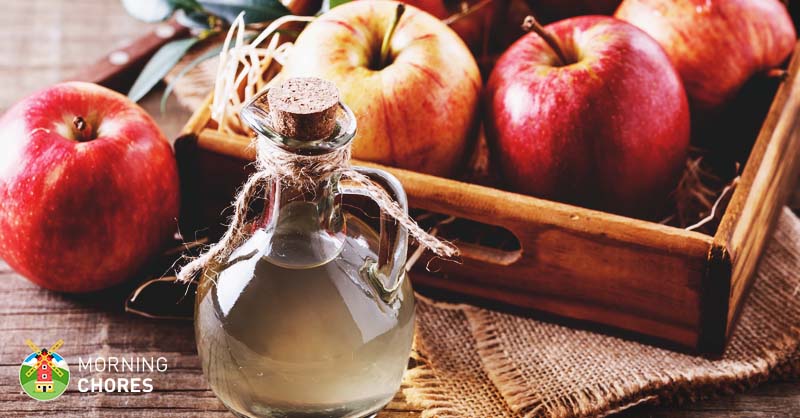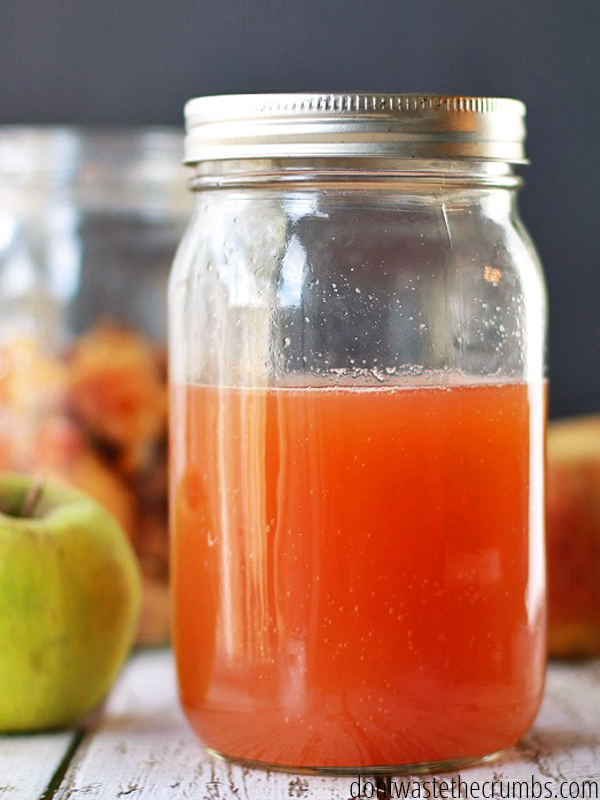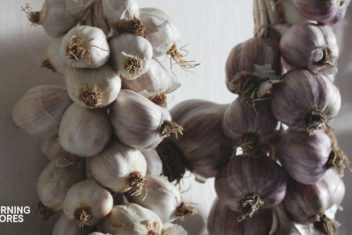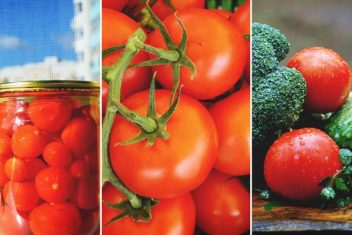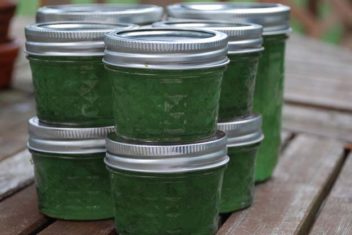Are you new to the homesteading way of life? Or are you just looking for a few extra ways to save money or live healthier?
Maybe you have been homesteading for a while, but you are just now making your way inside the kitchen (I understand!). A small farm can be so time-consuming that you are only now venturing to learn how to make your own pantry staples.
Well, I’ve been to all of those places. I actually began trying to make vinegar during apple season a few years ago. I was on Pinterest one day looking around for more things I could make from scratch when I saw that apple cider vinegar was something I could easily make.
Plus, we were in the middle of dehydrating, canning and freezing large amounts of apples. We always fed the scraps to our animals, but I thought, “Why not save a little for us if I can make a staple?”
So that is what I did. I’m going to share with you how you can make apple cider vinegar, and I’m also going to share with you a few mistakes I made the first time I tried to make vinegar. I laugh about it now, but honestly, I struggle to make some of the easiest things sometimes.
No worries, it’s okay if you laugh at me too. This is how you make apple cider vinegar:
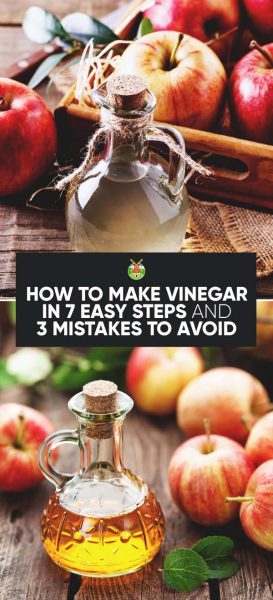
How to make Vinegar from Apple Cider
You’ll Need:
- A mason jar
- Apples or apple scraps
- Raw sugar
- Water
- Cheesecloth
- Rubber band or mason jar ring
1. Gather and Prep Your Apples
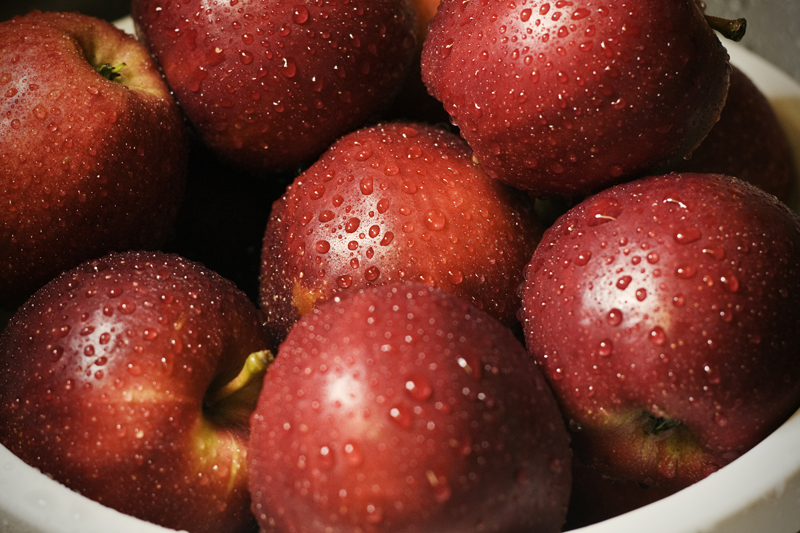
Not everyone that makes apple cider vinegar does so in the midst of putting up apples for the year. If you are someone that likes to put up apples, then just know that you’ll have to save a few cores and some peelings.
Just know, you’ll need the peelings and cores of around 6 apples to equate to 1 jar of apple cider vinegar.
Normally, what I’ll do is decide how many jars of vinegar I want to make that year.
Then I’ll do the math to know how many apples that will take.
Finally, I’ll just count the apples as I peel and set those scraps aside specifically for making vinegar. Then everything else will go into a different bowl which I take out to the chickens.
However, if you are someone that just has a few apples on hand with the idea of making vinegar, then you’ll only need about 3 whole apples for each jar of vinegar.
So you’ll need to slice those apples into smaller chunks and add them to a clean and sterilized mason jar.
Again, if you are using scraps, then you’ll just go ahead and place them into a clean and sterilized mason jar as well. It is all about using what you have on hand.
2. Mix the Sugar
So your apples are cut, washed, and in a sterilized jar. (Or your scraps are.) Either way, it is now time to mix your sugar with water.
Now, a good estimate is usually equal teaspoons of sugar to the amounts of apples. If you used 3 apples, then you’ll need around 3 teaspoons of raw sugar. Raw sugar produces the best fermentation results (in my opinion) so I try to stick with it. I’ve heard of some people using honey, but I’ve never tried it myself.
Again, if you use scraps, you’ll still put about 3 teaspoons of sugar in with them for the fermentation process.
When you have your sugar all figured out, you’ll mix it with 1 cup of water. If you are making a lot of batches of vinegar, you’ll need to do a separate sugar/water mixture for each jar. That way you know the desired amount of sugar and water is going into each batch.
3. Add Water
Now, after you have your sugar water and apples in your jars it is time to add more water. The idea is for your apples to be completely submerged.
Truthfully, using fermenting jars makes this part of the process so much easier because they have a little device inside of them that is meant to hold items inside the jar down into the liquid.
However, if you don’t have a fermenting jar, I’ve heard of people using large pitchers to store their vinegar mixture in. That way they can place items inside sandwich baggies (to protect the heavy object) that will hold the apples down into the water.
4. Cover and Wait
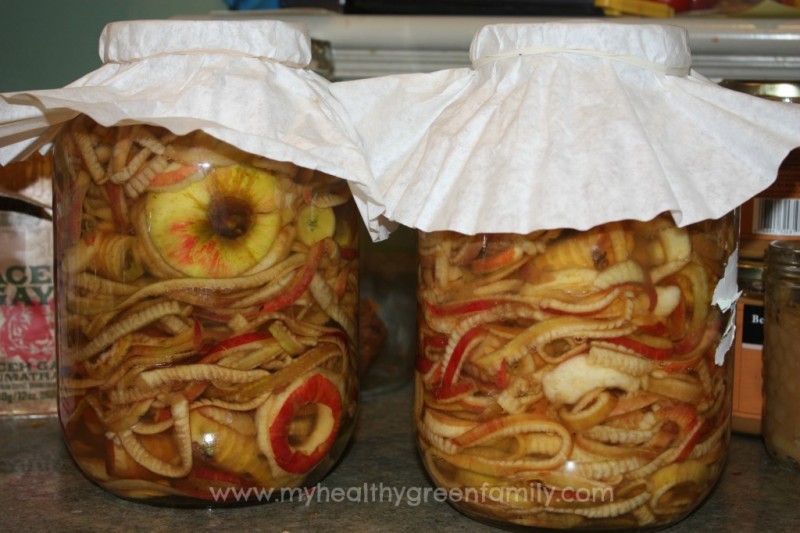
Next, we just cover the jar or container you are using. You’ll have to use a cheesecloth to cover it with. Then if using a mason jar, you’ll just use a mason jar ring to secure the cheesecloth in place.
However, if you are using a larger pitcher, you’ll place the cheesecloth over it and then secure it into place with a large rubber band. Be careful so it doesn’t snap loose and hit you. You want to use a cheesecloth so the mixture can still breathe without pests flying in it.
When you’ve accomplished this, you’ll place the mixture in a warm and dark area for around 2-3 weeks. You could use a dark place in your pantry, a cupboard, a dark corner of a closet, or even under a bed.
5. Strain
Once the 2-3 week period has passed, you will need to pull the mixture out. You’ll then strain the liquid away from the apple pieces or scraps that you used in this mixture.
Then you’ll discard the apple pieces while placing the liquid back into the same jar. This is now going to be your vinegar!
6. Rinse and Repeat
After you have your liquid back inside the same jar, you’ll use the same cheesecloth to cover the lid again.
Again, be sure to secure the cheesecloth with a rubber band or ring to ensure that it stays in place. We need to allow the liquid to breathe but not be contaminated by gnats and other flying pests that will be drawn to it.
Then you’ll allow the mixture to sit in that same dark location for another 4-6 weeks.
However, be sure to remember to stir the liquid every 3 or so days with a wooden or plastic spoon. Try to stay away from metal during this process as it messes with the fermentation process. Keep that in mind during step 5 as well.
That way you’ll know to use a plastic strainer if you have one available so the mixture won’t come in contact with stainless steel. You don’t want to put in all of this time to have that one tiny thing mess up your wonderful, homemade apple cider vinegar.
7. Taste and Transfer
Now that the 4 week waiting period has passed, it is time to begin taste testing. Taste a little of this vinegar mixture every day until you are satisfied with the amount of acid in the taste.
As soon as it hits the acidity level that you prefer, you are ready to transfer.
All you’ll do is place the liquid into a vinegar bottle with a lid. Once it is capped, the air will stop getting to it and stop the fermenting process.
The Mistakes I Made When I First Started Making Vinegar
I told you I would share with you a few of the mistakes I made when I first began making vinegar. Here they are:
1. I didn’t cover my apples completely
The first time I made vinegar I followed a tutorial online. As we all know, sometimes we achieve different results from those shown on a tutorial. I’m a writer, and I know how easy it can be to miss a step.
However, I’m also a human that tries tutorials, and I know how easy it can be to skim over something not realizing how important it actually is.
Well, I’m not sure which of those two instances happened, but I do know I didn’t cover my apples completely.
Also, I don’t think I added enough sugar to the mixture either.
As you can tell my vinegar making days got started off on a rocky foot.
2. I forgot about my vinegar
Next, I forgot about my vinegar. I mean, it is easy to do! When you spend 8 weeks making something (and the majority of that time is spent with a mixture sitting in a dark corner) you have a tendency to move on with life. I have the same issue with making a sourdough starter from time to time.
Still, I digress. I completely forgot about it, and I left uncovered apples sitting far too long.
Naturally, my first batch of vinegar molded. It was disheartening, but I didn’t give up.
3. I didn’t stir it
I went back to the drawing board making sure that all of my apple scraps were covered this time. Also, I set a reminder on my phone to help me tend to the vinegar when I needed to, and I made it past the first steps.
Then I strained it and transferred it back into the original jar and forgot about it again. Which means, I failed to stir it.
Also, I don’t think I ever put mine in a dark enough location either. I don’t have a pantry or a closed cupboard in my current home because we have all open shelving in our farmhouse kitchen.
So I had the issue of finding a dark corner to stash it in, but I learned a valuable lesson through making vinegar as well. Though it is time-consuming, and I struggled a bit, I didn’t quit and now I’ve learned something new that I’ll probably never forget.
This leads me to point in sharing my mistakes: hopefully, you won’t be like me and struggle through any of our tutorials. (I try really hard to make them as detailed and easy to read as possible.) However, if you do, don’t give up. You’ll get it, and always feel free to ask us or anyone in our community because we are here to help you lead a more self-sufficient lifestyle!
Well, now you all know how to make apple cider vinegar from whole apples or scraps of apples. You also know a few of the (embarrassing) mistakes I made in my first couple of go-rounds with making vinegar. I hope that you find great success in your vinegar making times.
Also, don’t forget that vinegar is great for a lot of things, but my absolute favorite thing to do with vinegar is to make vinegar pie. It is very frugal but tastes wonderful.
So don’t think that everything that comes from vinegar has to be bitter because vinegar pie is one of my favorite desserts.
